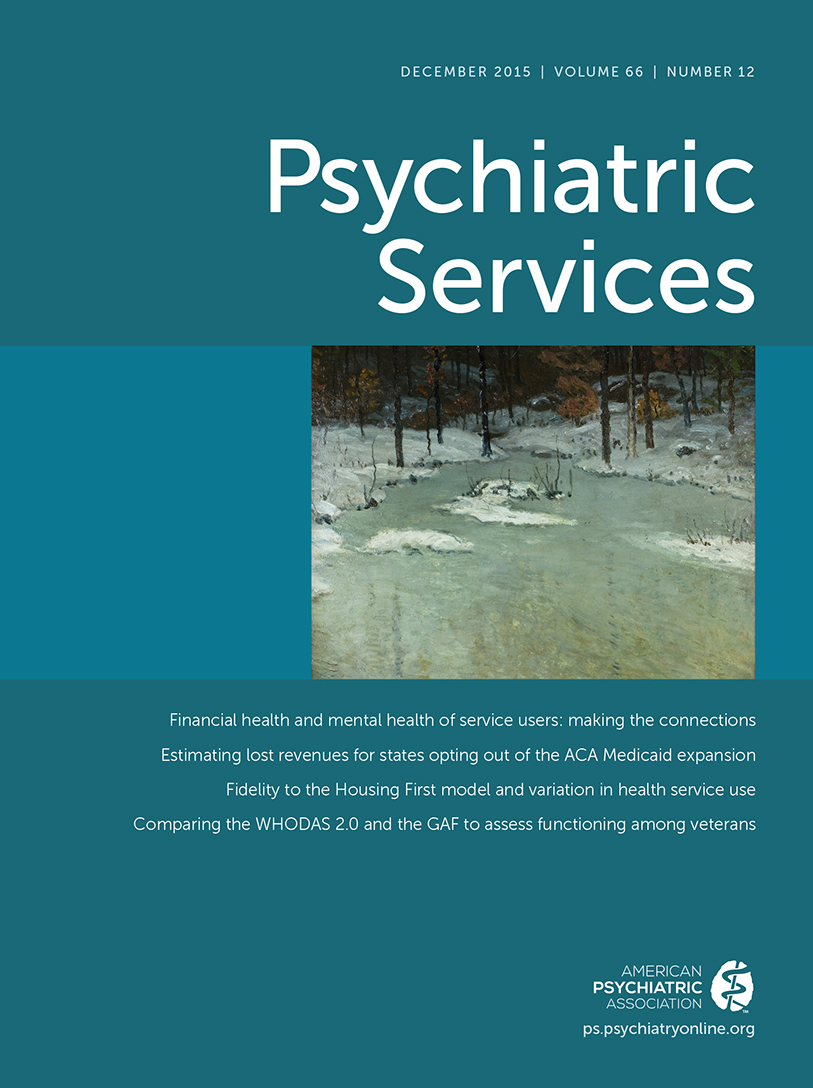This Month’s Highlights
Financial Health and Mental Health
People with mental illness often live in poverty. Many do not seek employment, preferring a meager but reliable stream of benefits to income from low-paid and insecure work. To better understand the financial circumstances of this population and help inform the development of service options other than payeeship, Annie Harper, Ph.D., and colleagues held focus groups with clients and direct care staff at an urban community mental health center (CMHC). All clients spoke of difficulties with their finances. Even those who were employed struggled financially. Many did not have a bank account because of past overdraft problems or fear of incurring high fees. Most clients wanted advice and education on managing their finances, but staff noted a lack of such services. Suggestions from clients and staff included creation of peer-to-peer groups for sharing budgeting tips and the development of relationships between the CMHC and community banks that could offer low- or no-fee accounts (page Original article: 1271). In a Taking Issue commentary, Steven S. Sharfstein, M.D., describes seminal research in the 1950s that linked social class and poverty with major mental illness and calls for more attention to the link between poverty and poor mental health, not only by treatment programs but also in federal policies and disability benefits programs (page Original article: 1257).
Saying No to Medicaid Expansion: Consequences for States
Several states have decided not to expand Medicaid under the Affordable Care Act, which means that sizable portions of their populations remain uninsured. To shed light on the impact of states’ decisions to opt out, Emily Jones, Ph.D., M.P.P., and colleagues estimated the amount of additional revenue that could accrue to community health centers if all states were to expand Medicaid by 2020. For more than 50 years, the U.S. network of community health centers has provided critical access points to primary and behavioral health care in underserved communities. Federally qualified centers are required to serve all patients without regard to ability to pay, meaning that centers in opt-out states will forgo Medicaid revenues for clients who might have been covered by Medicaid. How much revenue will be lost by 2020? The authors estimated $13 million for behavioral health services—or an additional 59,214 mental health encounters and 11,480 encounters with substance abuse treatment specialists (page Original article: 1277).
Fidelity to Housing First and Use of Services
Permanent supported housing (PSH) programs are being implemented across the country. Many are based on the Housing First model, which does not require clients to receive treatment services to obtain housing. In a study of PSH programs in California, Todd P. Gilmer, Ph.D., and colleagues examined the relationship between fidelity to the Housing First model and health service use among clients. Data on use of a wide range of mental health services were analyzed for more than 5,000 clients before and after they entered 77 PSH programs. Clients in programs with higher fidelity to Housing First had greater increases in outpatient mental health visits. Higher-fidelity programs also enrolled clients who used fewer outpatient services in the year before enrollment, leading the authors to conclude that higher-fidelity programs may be more effective than those with lower fidelity in outreach to and engagement of clients who are not appropriately served by the public mental health system (page Original article: 1283).
Focus on Homelessness and Residential Transience
Two additional reports this month examine homelessness and risk of homelessness. Japan, which began a process of deinstitutionalization in 2004, has the largest number of psychiatric beds per capita in the world. Most psychiatric inpatients are elderly long-term patients, who are at risk of homelessness after discharge. Because little is known about homeless people with mental illnesses in Japan, Tsuyoshi Okamura, M.D., Ph.D., and colleagues examined data from a survey of persons receiving support from a Tokyo homelessness program. Of the 684 survey respondents, 210 lived in shelters, and a third of the shelter residents had a mental illness. The mean age of shelter residents was 65. Findings indicate a need for a support system for patients discharged from psychiatric hospitals in Japan (page Original article: 1290). In a U.S. study, Cristie Glasheen, Ph.D., M.P.H., and Valerie L. Forman-Hoffman, Ph.D., M.P.H., analyzed data from 154,000 adults who participated in the 2008–2011 National Survey on Drug Use and Health to examine the relationship between residential transience (moving frequently) and mental illness. They found that transience was more prevalent among adults with mental illness than among those without (5.7% versus 1.9%). Among respondents reporting multiple races, having a mental illness was associated with a fourfold increase in the odds of residential transience (page Original article: 1357).



